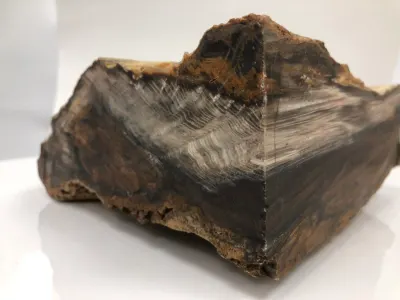Have you ever seen a piece of petrified wood and wondered where it came from? How was it created? Why is it so dense and feels like stone? What colors does this fossilized wood, display? Keep reading for answers to all of these questions and to learn more about this interesting process.
What is petrified wood?
Petrified wood is a type of fossilized wood that can form in several different ways. This fossilized wood is normally a preserved section of a tree trunk in which minerals have replaced most, if not all, its organic material (minerals instead of wood). Although petrified wood can consist of different materials other than normal wood, petrified wood can maintain the same shape and patterns as its past organic form. Fossilized wood can also occur in other forms such as wood in submerged forests or mummified wood. What separates petrified wood from other fossilized wood is how it forms.
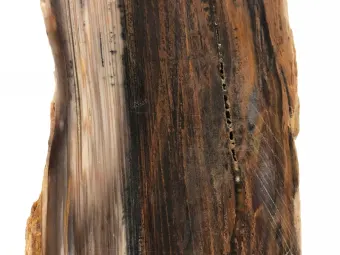
How does petrified wood form?
The most important cause of wood fossilization is the rapid burial of wood plant matter. This quick burial process creates an environment poor in oxygen and seals off bacteria and fungus that would cause decomposition. After this, two different processes can occur:
- The more recognizable process is when groundwater, full of minerals, flows through the overlying sediments and into the buried wood. As the water flows through the material, it deposits minerals picked up from the sediments. These mineral particles replace the organic matter but preserve all the textures and structures the wood had when it was still above ground. Some of these pieces will even show bark or tree rings!
- Another way wood can be fossilized is through the cast and mold process. After the wood is submerged, water flows through the sediment into the material, but instead of slowly replacing the internal structures of the wood, the wood is essentially dissolved away leaving a cavity called a mold. This cavity is then filled with minerals, like quartz, that preserve the exterior texture of the wood. This replacement is called a cast.
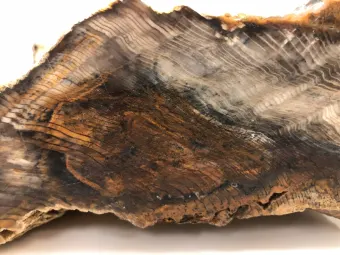

How does petrified wood get its colors?
Like many gemstones, the colors of petrified wood are caused by different compounds or elements within the mineral. For example, the red, brown and yellow coloration can be caused by iron oxides. Pinks and oranges can be produced by trace amounts of manganese. Purple and blue coloration in petrified wood is caused by manganese dioxide. Shades of green found in petrified wood can be attributed to iron, copper, cobalt or chromium.
Interestingly enough, petrified wood from Arizona is known to have many colors on individual specimens. This variety of colors is caused by different oxidation states of Iron, which is the dominant coloring element for petrified wood samples in Arizona.
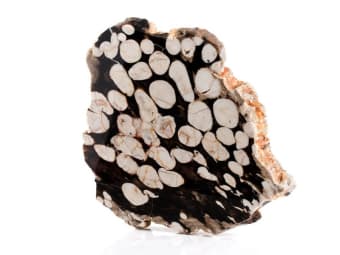
How old is petrified wood?
Most petrified wood on earth can be from 50 to 500 million years old spanning from the Paleozoic Era (570-240 million years ago), the Mesozoic Era (240-64 million years ago) and even some in the Cenozoic Era (65 million-present). Despite many samples being older than dinosaurs, petrified wood can form in as little as 5,000 to 10,000 years compared to older specimens.
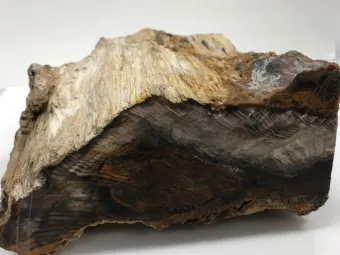
Where is petrified wood found?
Petrified wood is tough to find but possible. Although national parks in the United States are great sources of petrified wood specimens, it’s illegal to collect fossils or pieces of nature from them. Today, one of the best places to find and observe petrified wood is in the Petrified Forest National Park in northeastern Arizona. At one time, this park was a dense, lowland forest with a tropical climate and volcanoes nearby. These volcanoes erupted spewing ash that contained all of the elements that help color the wood after it was buried.
Common states that have petrified wood include: Washington, Oregon, Texas, Louisiana, Mississippi, South Dakota, California and Colorado.
Notable countries with petrified wood include: the United Kingdom, Australia, Madagascar, Brazil, Canada, China, Egypt, India and Indonesia.
Most of these locations have unique colors, patterns or even species of trees that are not seen in other areas. Washington and Oregon have ginko, cypress and oak species not found elsewhere. Texas, Louisiana and Mississippi have petrified palm wood. Australia has petrified driftwood called peanut wood, and Madagascar petrified wood comes in a rainbow of colors with well-preserved tree rings.
How to identify petrified wood
- Use the human eye to observe a wood specimen.
- Petrified wood samples should have smooth edges and natural colors.
- Specimens should also lack bark and display white-colored portions of wood–dried sap 3-5 inches in length. This type of petrified wood can also show orange and red for signs of preserved sap.
- Look out for growth rings and wood or bark patterns that include rings or grains.
- Lastly, check if the wood sample displays transparency by observing how much light can pass through it.
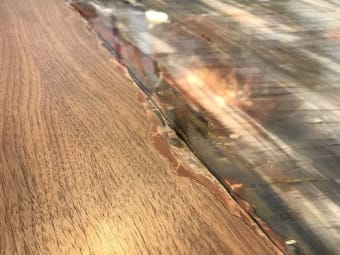
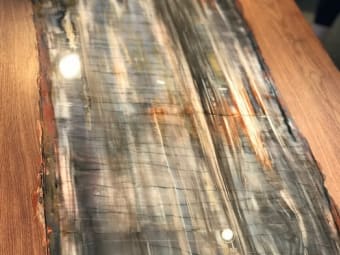
2. View a specimen with a microscope or magnifying lens.
- Look for rays (lines) of different thicknesses running through the specimen. Different types of wood and the trees they originate from can be identified by their rays.
- View a wood sample from low to high intensity and search for tracheid (wood cell) patterns. Different types of wood can be defined by their cell shapes and patterns.
- Color can indicate what trace elements or minerals are present within petrified wood. Some examples can include red, orange and yellow indicating iron oxide, and blue and green colors can suggest copper, chromium or cobalt.
- Check for resin ducts (large circular cells) within the specimen’s
cellular pattern. If not present, the wood is probably a deciduous
tree specimen.

Conclusion
Whether searching for a new addition to a gem collection or choosing a unique decoration for a home, petrified wood can make a great ornament. The variety of colors of petrified wood is not only fascinating to learn about, but it also makes for an incredibly eye-catching piece to collect or even wear.
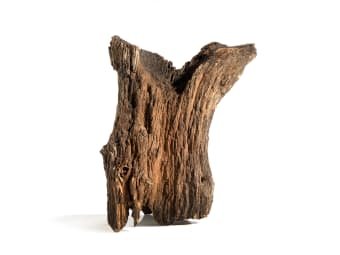
References
Don. (2022, May 23). The Ultimate Guide to Petrified Wood (what it is and how it's made). Rock Seeker. Retrieved August 15, 2022, from https://www.rockseeker.com/petrified-wood/
Geology in Credo: History of Earth. LibGuides. (2021, August 13). Retrieved August 15, 2022, from https://credoreference.libguides.com/c.php?g=139750&p=915554
Pedretti, G. (n.d.). How is fossilized wood formed? Fossil Design. Retrieved August 15, 2022, from https://www.fossildesign.it/en/how-is-fossilized-wood-formed
wikiHow. (2019, June 19). Simple ways to identify Petrified Wood: 8 steps (with pictures). wikiHow. Retrieved August 16, 2022, from https://www.wikihow.com/Identify-Petrified-Wood#References
